Discover the Alocasia Odora ‘Okinawa Silver‘, a remarkable plant hailing from Okinawa, Japan. Also known as the Elephant Ear Plant, it’s famed for its large, striking variegated leaves. Ideal for both indoor settings and garden spaces, it brings a unique tropical vibe. In this guide, we’ll cover everything from basic care to tips for thriving growth. Perfect for new gardeners, we’ll make plant care a breeze with our straightforward advice. Get ready to transform your space with the beauty of Okinawa Silver!
Appearance of Alocasia Odora ‘Okinawa Silver’
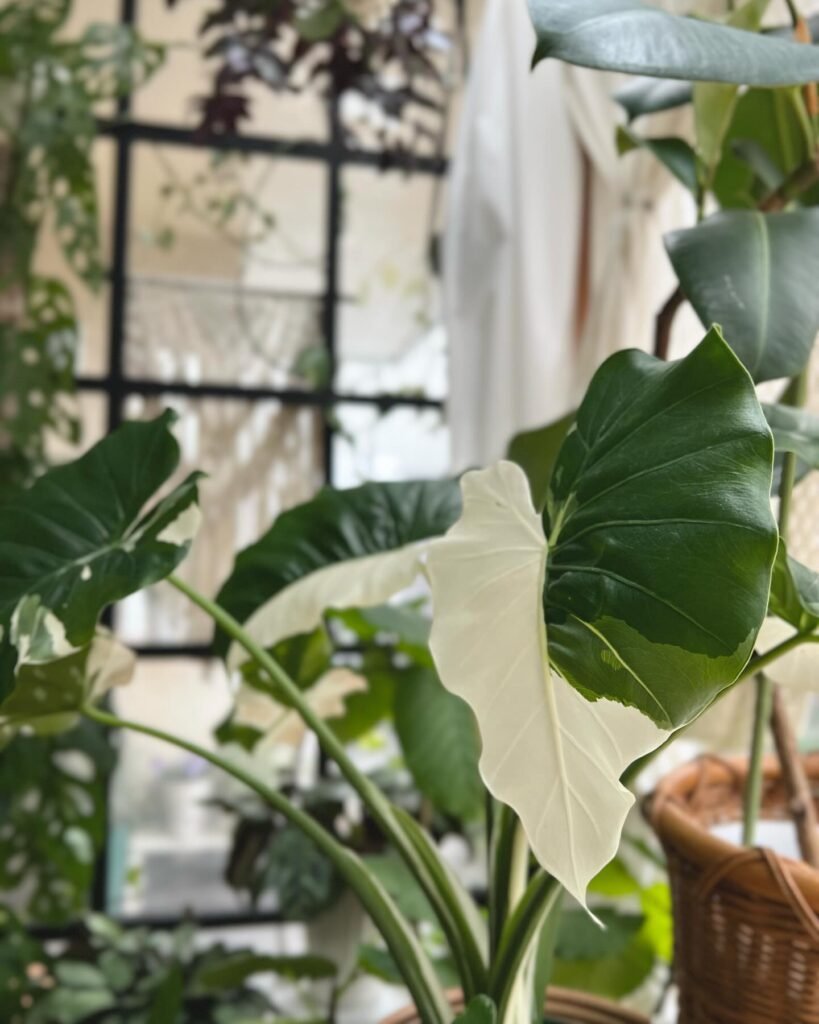

With its eye-catching variegation, the Alocasia Odora ‘Okinawa Silver‘, also known as Variegated Elephant Ear, brings a touch of the extraordinary to any space. Its large leaves, displaying a unique white and green pattern, create a stunning visual impact. This plant’s beauty lies in its natural artistry, making it a standout addition to any plant collection. A true marvel of nature, the Okinawa Silver is a must-have for those seeking to infuse their surroundings with a unique and exotic elegance.
 Okinawa Silver thrives in high humidity environments, making it a perfect choice for bathrooms and kitchens. This adaptability is a testament to its resilience, coming from a lineage of plants that evolved in humid Asian forests.
Okinawa Silver thrives in high humidity environments, making it a perfect choice for bathrooms and kitchens. This adaptability is a testament to its resilience, coming from a lineage of plants that evolved in humid Asian forests.
What is The Difference Between Okinawa Silver and Alocasia Odora?

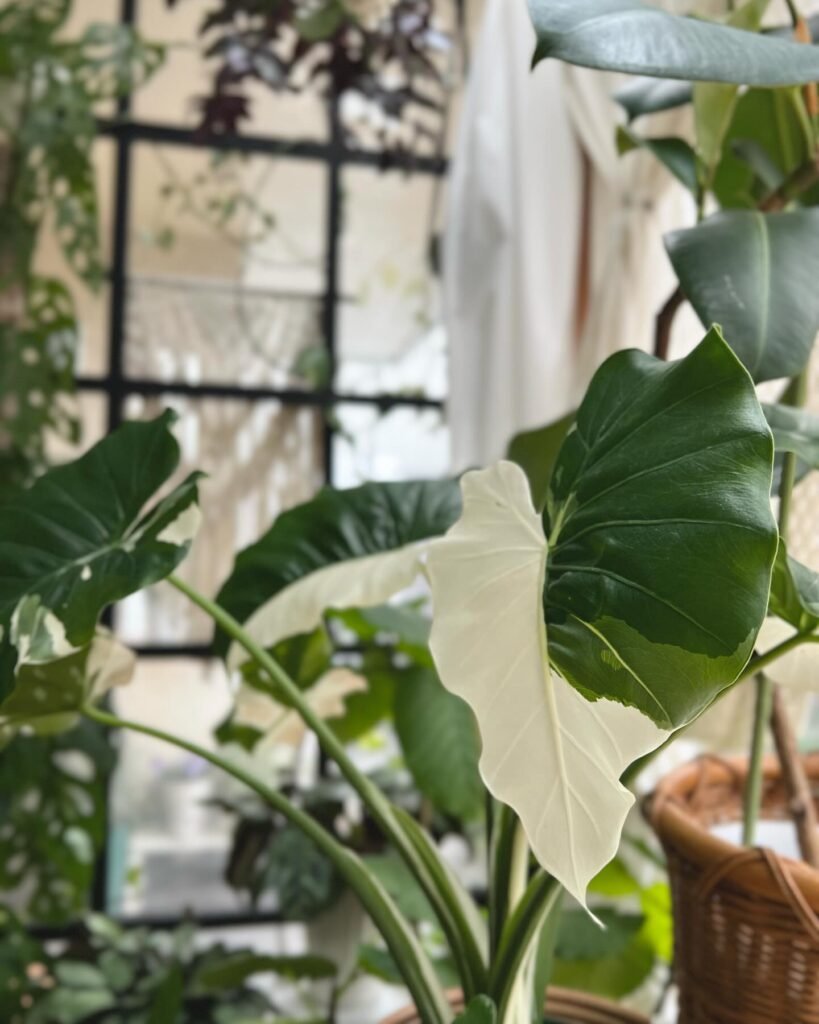
Navigating the world of Alocasias can be a bit tricky, especially when it comes to the Okinawa Silver and Alocasia Odora. Let’s clear up any confusion! Our quick comparison table below outlines their key differences, making it easier for you to understand what sets them apart.
| Aspect | Okinawa Silver | Alocasia Odora |
|---|---|---|
| Leaf Color | Variegated white and green | Solid green |
| Variegation | Prominent, each leaf unique | None |
| Popularity | Highly sought-after for unique variegation | Popular, more common |
| Ideal Environment | Thrives in bright, indirect light | Adaptable to various lightings |
This comparison should help you appreciate the unique traits of each plant, whether you’re deciding which one to add to your collection or just curious about their differences. Both bring their own charm to any plant lover’s collection!
Light Requirements for Okinawa Silver

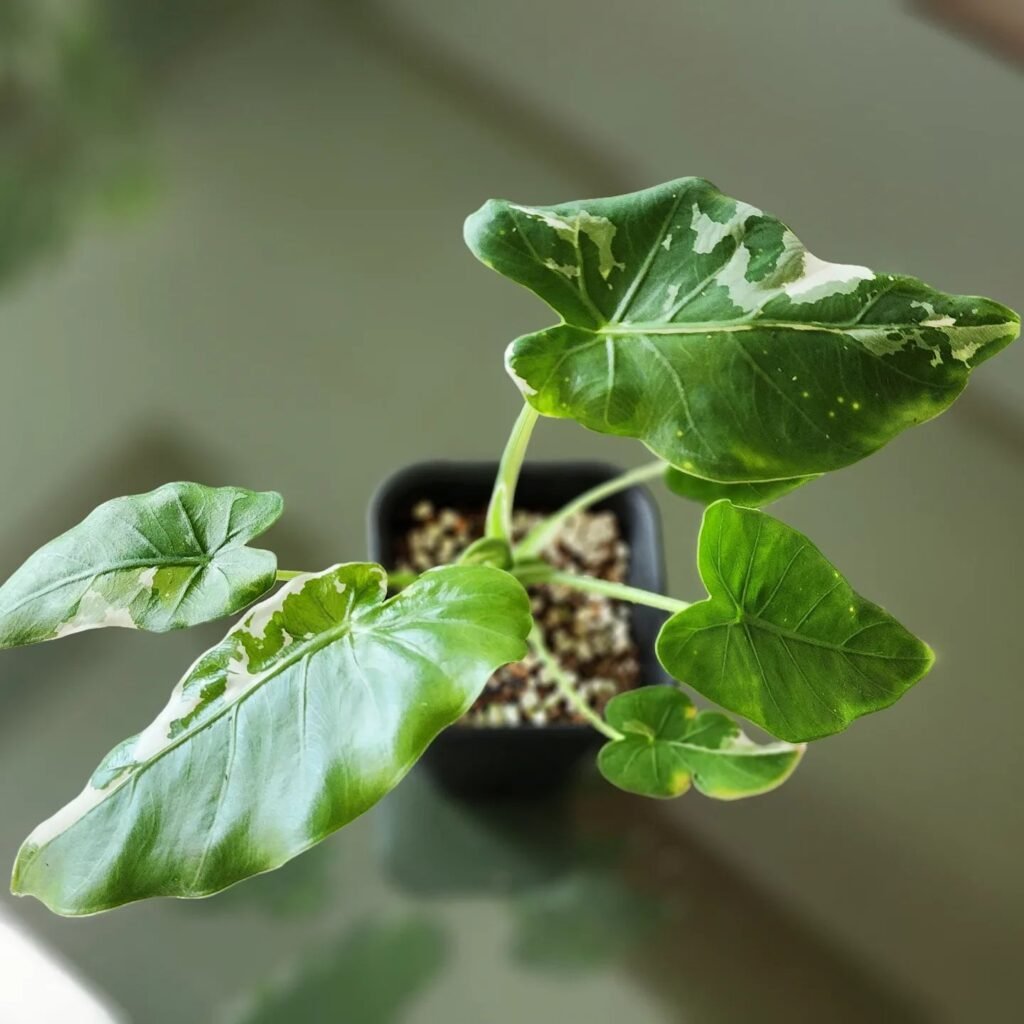
Proper lighting is crucial for the health and beauty of the Okinawa Silver:
- Bright Indirect Light: This plant thrives in bright, indirect sunlight. Direct sun can damage its leaves.
- Shade Tolerance: It can tolerate shadier spots compared to other tropical plants, but too little light can affect leaf colour.
- Avoid Direct Sunlight: Direct sun can scorch the variegated leaves, so choose a spot with filtered light.
- Rotate for Even Growth: Regularly rotate the plant to ensure even growth and variegation.
These lighting tips will help maintain the stunning appearance of your Okinawa Silver.

Watering Tips for Alocasia Odora ‘Okinawa Silver’


Watering your Okinawa Silver correctly is key to keeping it happy and healthy:
- How Often: Allow the topsoil to dry out slightly between waterings. Overwatering can lead to root rot.
- Water Amount: When watering, ensure the soil is moistened thoroughly, but avoid waterlogging.
- Signs to Watch For: Yellow leaves can indicate overwatering, while droopy leaves suggest it needs more water.
- Seasonal Adjustments: Reduce watering frequency in the cooler months when the plant’s growth slows down.
By following these watering tips, you’ll ensure your Okinawa Silver stays lush and vibrant. Remember, each plant has its own personality, so observe how it responds and adjust your routine accordingly. Happy watering!

Getting the Soil and Fertilizer Right for Okinawa Silver
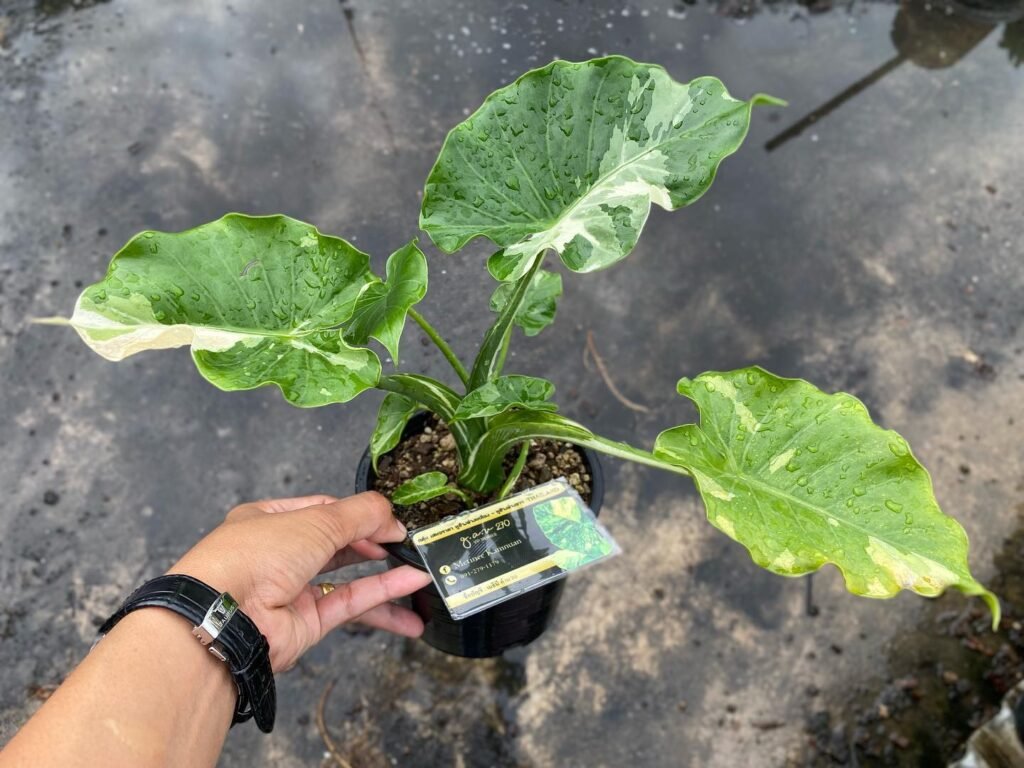
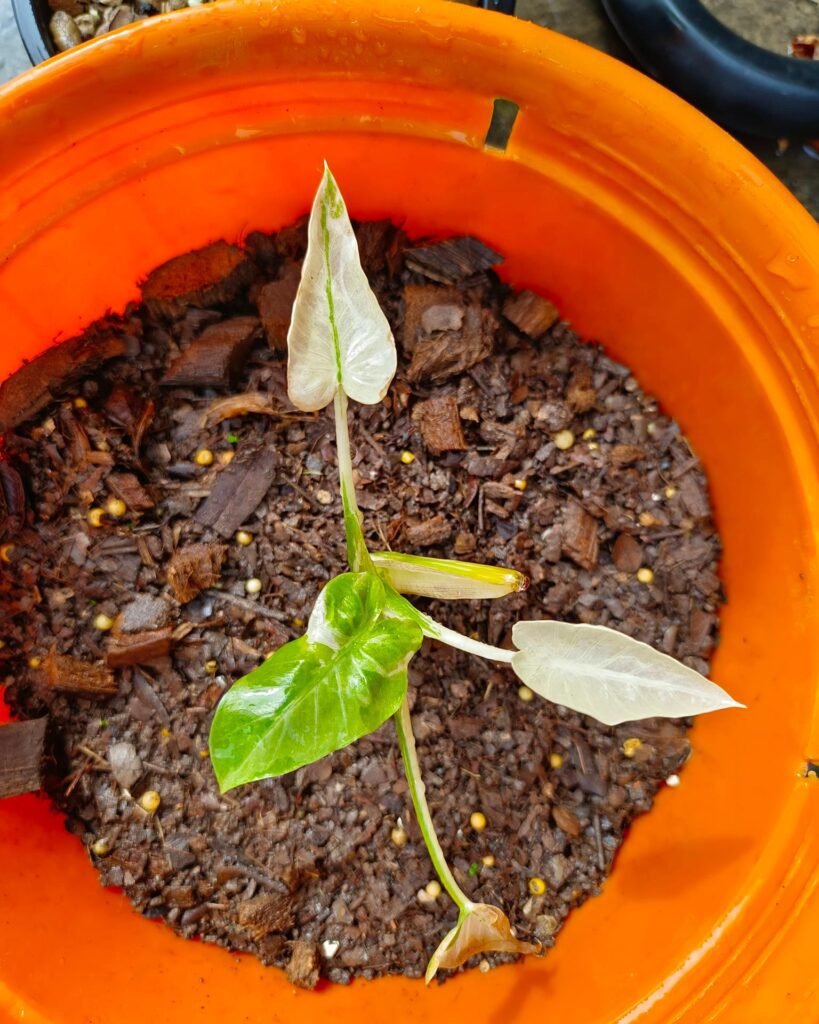
A happy Okinawa Silver starts with the right soil and a bit of food. Here’s a quick table to keep things simple:
| Aspect | Details |
|---|---|
| Soil Type | Well-draining, rich in organic matter |
| Fertilizer | Balanced, every 4-6 weeks during growing season |
With the right soil and a sprinkle of fertilizer, your Okinawa Silver will be living its best life, showing off those stunning leaves.

Pruning and Maintenance for Okinawa Silver
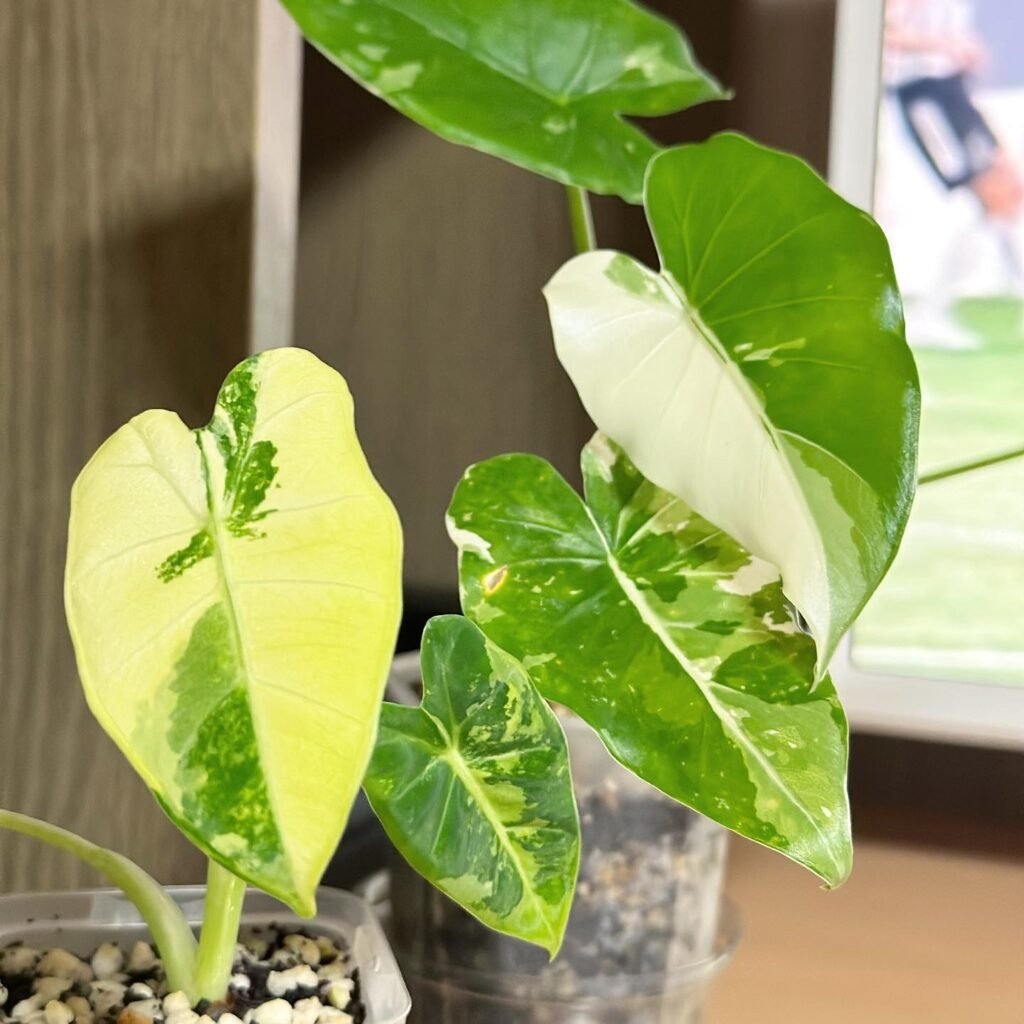

Maintaining and pruning your Okinawa Silver is about more than just plant care; it’s about nurturing its extraordinary beauty. Here’s how you can help your plant thrive:
- Pruning Know-how: Regularly remove any yellow or damaged leaves to keep your plant looking fresh and vibrant.
- Clean for Shine: Dust the leaves occasionally to maintain their lustrous appearance and promote better light absorption.
- Support for Growth: Offer a stake or similar support as the plant grows, ensuring it stands tall and proud.
Through these simple yet effective care steps, your Okinawa Silver will continue to be a stunning focal point in your home or garden, showcasing the unique beauty that makes it so special.

Propagating Alocasia Odora ‘Okinawa Silver’

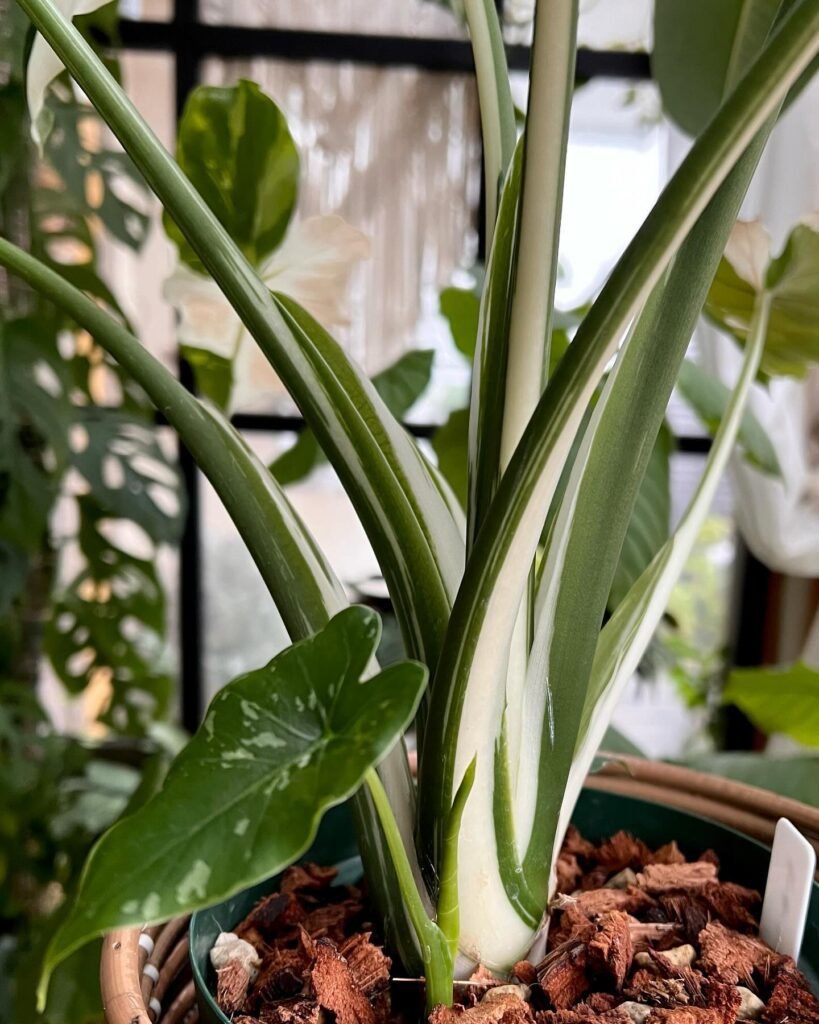
Propagating Okinawa Silver is a rewarding experience and not too tricky. Here’s a simple guide:
- Select a Healthy Section: Choose a stem cutting with a few leaves and nodes.
- Rooting Medium: Place the cutting in water, sphagnum moss, or soil. Ensure the nodes are submerged or in contact with the medium.
- Bright Indirect Light: Position it in a spot with bright, indirect sunlight for optimal growth.
- Patience is Key: Wait for roots to develop, which can take several weeks.
This method lets you grow more of these beautiful plants, perfect for sharing or expanding your indoor jungle!

Repotting Tips for Okinawa Silver
Repotting your Okinawa Silver is more than just a routine task; it’s an opportunity to give your plant a fresh start. Here’s a step-by-step guide:
- Timing: It’s best to repot when the plant starts to outgrow its pot, usually every 2-3 years.
- Right Pot: Choose one that’s a bit larger than the current one, ensuring it has drainage holes.
- Soil Selection: Opt for a well-draining tropical plant mix for the best results.
- The Process: Gently take your plant out, carefully loosen the roots, and then replant in the new pot. Fill in with fresh soil.
- Post-Repot Care: After repotting, water it and place it in a spot with indirect sunlight.
By repotting, you’re giving your Okinawa Silver essential room to grow and thrive, ensuring it remains a beautiful and healthy part of your home for years to come.
 Okinawa Silver, renowned for its striking, velvety leaves with silvery sheen, is a rare find in the plant world. Its unusual coloration is due to tiny hairs on the leaves, reflecting light and giving it a shimmering appearance.
Okinawa Silver, renowned for its striking, velvety leaves with silvery sheen, is a rare find in the plant world. Its unusual coloration is due to tiny hairs on the leaves, reflecting light and giving it a shimmering appearance.
Helpful Videos about Alocasia Odora ‘Okinawa Silver’
Looking to master the care of your Okinawa Silver? These handpicked videos are just the ticket. From watering to the right light, they cover all you need to know in easy steps. Perfect for both beginners and green thumbs looking to learn a thing or two!
- Mastering Alocasia Care – Tips and Tricks
- Grow alocasia from corms (bulbs)
With these visual tips, you’ll be a pro in no time. Remember, each video is a step towards perfect plant care. Check them out and see your Okinawa Silver flourish!
Alocasia Odora ‘Okinawa Silver’ Plant Care FAQ

Welcome to our straightforward guide on caring for the Okinawa Silver plant. Perfect for new gardeners, this FAQ will help you understand the basics of nurturing this lovely plant, ensuring it thrives with minimal fuss.
In bright, indirect sunlight, away from direct midday sun.
Once a week or when the top inch of soil is dry.
Use well-draining soil, like a potting mix with added perlite.
Yes, monthly with a balanced fertilizer, but not in autumn and winter.
Use water spray or insecticidal soap for aphids and spider mites.
Avoid cold drafts; it prefers warmer temperatures above 15°C (59°F).
Light pruning encourages bushier growth. Trim back in spring if needed.
Easily done by stem cuttings in water or soil during spring or summer.
Repot every 2-3 years or if it outgrows its pot.
Over-watering or poor drainage can cause yellow leaves. Check soil conditions.
It’s non-toxic, making it safe around pets.
Place on a water-filled pebble tray or mist regularly.
This can be due to over-watering, low light, or temperature stress.
Yes, it can thrive under grow lights if natural light is insufficient.
Ensure ample light and proper care, but blooms are rare indoors.
That’s our roundup on caring for your Okinawa silver! Remember, it’s all about the basics: right light, right water, and a bit of love. Got more questions about this beautiful plant? Drop them in the comments below – we’re here to help!

